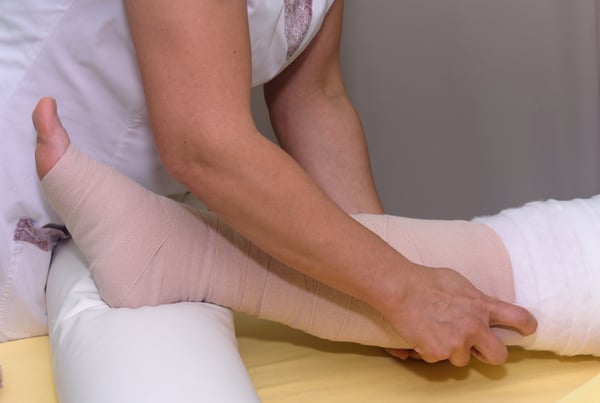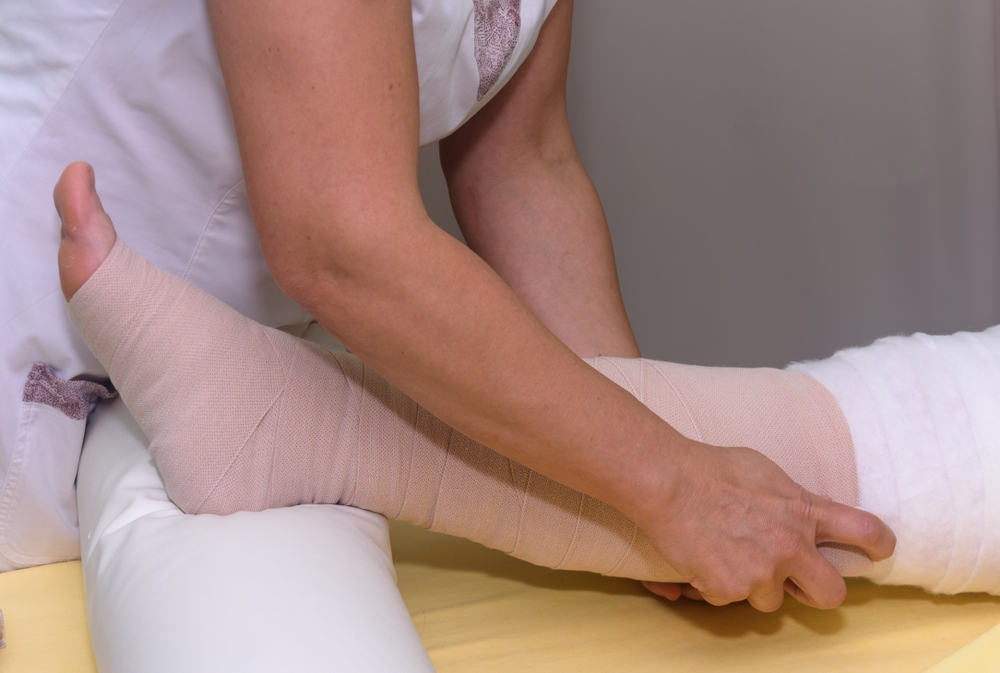Lower Extremity Lymphedema: Types, Causes, and Treatment
Published by
Dr. Michael Ryan
on

Your lymphatic system and your immune system correlate greatly. Therefore, if you are suffering from lymphedema, which currently affects around 10 million Americans yearly, you are likely not feeling so great either. Surprisingly, with the scope of the disease and the many people it has impacted, it is still a relatively unknown condition. So, what is lymphedema exactly?
What is the Lymph Circulation in Legs?
The lymph circulation takes tissue fluid in the body and returns it to the blood circulation. It does this by filtering it through lymph nodes so that any bacteria and viruses will be removed. When the lymph circulation fails, the fluid and unwanted bacteria back up in the tissues causing swelling, tissue inflammation, skin scarring and very often infections. When this happens you have lymphedema.
How does the healthcare provider make the diagnosis of lymphedema?
How does the healthcare provider make the diagnosis of lymphedema?
- the symptom pattern listed below
- presence of associated conditions listed below
- positive response to treatment listed below
Characteristics of Lymphedema, & Symptoms of the Lymphedema Condition
- Swelling in an extremity that won’t go away overnight. This is the most important and common finding.
- Swelling in the leg that extends into the top of the foot and on into the toes. This is very common in early stage lymphedema.
- As the condition progresses, swelling in the leg that extends above the knee into the thigh.
- The range of motion becomes restricted.
- Discomfort within the affected extremity eventually develops.
- Recurrent infections (cellulitis)
- Hardened, thickened and abnormal skin in the calf
- Skin sores in advanced cases
- Weeping of fluid (clear yellow lymph fluid) from minor skin breakdown
Causes of Lower Extremity Lymphedema
As mentioned above, the more common type of lymphedema is often caused by other conditions, a few of which include:
- So called "Primary Lymphedema" is uncommon and occurs in young people without known cause.
- Injury, surgery and trauma: Any injury or surgery that includes tissue disruption, skin burns or excessive scarring in the leg can result in lymphedema. This includes hip, leg and knee surgery.
- Infections: Some infections, like cellulitis, can damage the tissue around the lymph nodes leading to lymphedema which can last for months. Parasitic infections seen in some tropical areas of the world can also cause the condition.
- Radiation therapy: This therapy is often used to treat some cancers but can also injure normal lymph tissue causing scarring of the lymph circulation.
- Cancer surgery: Cancer can spread throughout the body within or through the lymphatic system. In some cases, surgeons remove the lymph nodes to prevent the cancer from spreading. This can negatively affect the lymphatic system and lead to lymphedema.
- Obesity: A large abdomen puts pressure on the lymph circulation from the legs which must pass through the pelvis and abdomen resulting in lymphedema.
- Sleeping in a recliner: this results in congestion of the lymphatic circulation and as inflammation and infection develops, the lymph nodes become swollen and block lymph flow.
Treatments For Lymphedema
Based on the severity of the condition, the following are successful methods for treatment of lymphedema:
- Self-Treatment for Lymphedema: When the case is mild, you can treat it yourself. However, once the condition progresses and extremities are extremely swollen, a visit to a therapist is wise. Self-therapy works if performed each day for about 10 minutes per leg.
- Manual Lymphatic Decongestive Therapy: This is the essential and standard treatment, is painless and is performed by a certified physical therapist. To get the best results, make sure your therapist is certified in this technique. Treatments length depends on the amount of swelling and can be completed in two to three visits per week over several weeks.
- Lymphedema Pump: This is a good follow up to decongestive therapy or self treatment and helps prevent recurrence of lymphedema. It rarely works alone without decongestive or self-therapy.
- Compression Stockings for Lymphedema: This is a good follow up to decongestive or self therapy and helps prevent recurrence of lymphedema.
Thankfully, the lymphedema condition can significantly improve and in some instances completely resolve with proper treatment. The primary treatment necessary for this outcome includes decongestive therapy with self-massage, exercise, compression stockings, and in some cases, lymphedema pump.
Contact your provider if you feel you have lymphedema to discuss treatment options.
Contact your provider if you feel you have lymphedema to discuss treatment options.


